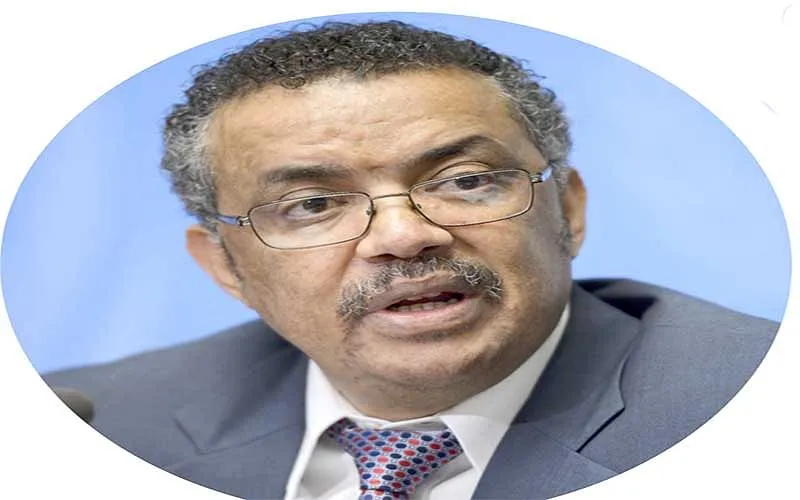In his press conference on September 8 Tedros Adhanom Ghebreyesus, Director-General (DG) of the World Health Organisation (WHO) dwelt on the current global Covid 19 situation. In particular, Ghebreyesus focused on the dire situation in low-income countries.
They continue to face shortages of vaccinations, medical equipment and protective gear, including for health workers. That was leading to preventable deaths. In this context he noted “More than 50 thousand people have died of COVID 19 every week since October last year, and for the past month, deaths have remained at almost 70 thousand a week”.
These figures only reinforce the fact that the pandemic is far from over. There is though, throughout the world, a pandemic fatigue and the people are chafing at restrictions. At the same time, governments, while opening up their economies and wanting a semblance of normal life to return, are warning their populations against complacency. However, unfortunately a large number of people are not observing the advice of their authorities leading to increased infections in cyclic patterns. Perhaps in authoritarian states where the public has little choice but to adhere to government orders that appropriate Covid behaviour is being better observed.
Significantly, Ghebreyesus said that there was now a “two-track pandemic”. This means the pandemic’s patterns and intensity is divergent in developed and poor countries. This is largely on account of the enormous differential in vaccinations between the affluent and the low-income countries. By now, 5.5 billion vaccines have been administered world-wide. Of these, 80 percent (that is 4.4 billion) shots have been given in the affluent countries. Estimates show that 2.29 billion people, that is, 29.4% of the world’s population has been fully vaccinated. Naturally, most of the vaccinated people are in developed countries. At the same time, in the poor countries a very large number of “most at risk” persons are still to receive the first dose of the vaccine. The divide between rich and poor countries that is basic to international relations is playing out this pandemic too.
Naturally, as DG of the WHO Ghebreyesus has to have a global perspective. He has therefore urged developed countries not to administer booster doses till the year-end to those of their fully vaccinated nationals who do not suffer from immunological deficiencies. Instead, he wants vaccines to be diverted to the poor countries so that their vaccine coverage increases. As developed countries have enough stock for their adult and teenage populations it would be appropriate for them to divert their stocks to the needy countries. However, in pandemic conditions national leaders want to play safe lest contingencies arise when their vaccine needs increase in an unanticipated way.
The luxury of diverting stocks does not exist for a country like India. Currently, 0.7 billion (70 crores) vaccine doses have been administered in India. This has resulted in 0.164 billion (16.4 crore) people to be fully vaccinated. But this comes to only 12% of the population. India went through a devastating second wave in spring and autumn. The government and the people would not like to risk a wave of a similar nature. Currently, vaccinations are the only way to mitigate the rapid spread of the virus. Hence, it would be very difficult for the government to justify the export of vaccines even if it had pledged to meaningfully contribute to the Covax programme which aims to provide equitable access to vaccines. The Indian people, like any other people, would expect that their government gives priority to their needs. Governments, especially in democratic countries, have to respond positively to justified popular demands.
Herein lies the contradiction in the perspective of heads of international organisations and national leaders. While the former look at issues from a global standpoint the latter, in critical times, view them more narrowly and from the requirements of their countries. It is not easy to reconcile these differing views which are rooted in differing responsibilities. The WHO view clearly emerged in a response to a question relating to exports of Indian manufactured vaccines to the Covax programme.
A senior WHO official said that the organisation had estimated that till the end of this year 30% of Covid vaccines for the Covax facility need to come from those manufactured in India. He disclosed that the issue of India resuming supply of these vaccines was “constantly” being discussed by Ghebreyesus and Covax officials with “senior members of the Indian government” and the Serum Institute of India. He went on to say that the big wave caused by the Delta variant was under control. Further, India had been able to cover 40% of the population with a one dose and “half of that with both doses”. In the light of these advances there was “completely the expectation” that India would open up supplies for low-income countries.
The memory of the second wave has not faded among the people even if the media has moved to other issues. Apart from non-pharmaceutical intervention the only available shield is vaccination. Is it fair for the WHO to expect that India, which is also a developing country, overlooks the requirements of its own people? It is true that in a globalised world and with the virus mutating no country is safe until all countries are safe. However, it is impossible for any government to preach this maxim to its people especially if infections rise rapidly.
It will be interesting to observe how the Indian authorities address the issue of vaccine exports to the Covax facility.







